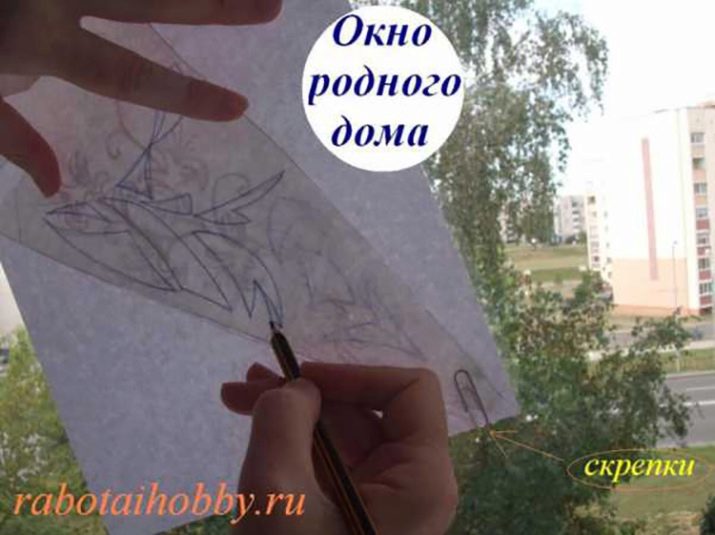Choosing a fabric for satin stitch embroidery

Satin stitch embroidery is as popular as cross-stitch embroidery. Each technique has its own performance secrets. What kind of fabric to choose and what characteristics you should pay attention to - this will be discussed in our article.
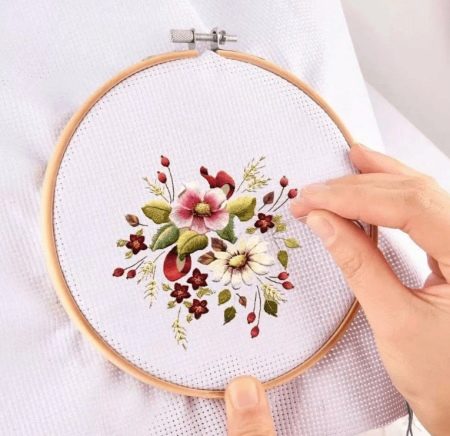
Peculiarities
Ironing is a special technique in which the threads completely fill in the gaps in the pattern applied to the surface. There are a lot of types of stitches for working in this technique, but all of them are united by the smooth transition from one to another, so "smooth" patterns from threads are obtained.

Dense, non-stretching materials are most suitable for working in this technique. The choice of fabric for satin stitch embroidery usually depends on the type of product you plan to create. If it is a painting for interior decoration or a pattern on clothes, take cotton, linen, jeans, crepe de Chine. Hard felt is used for making brooches. Handkerchiefs are embroidered on thin cambric. Calico or satin is suitable for bed linen.
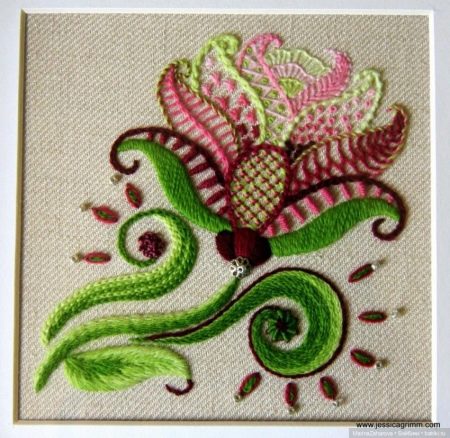
Views
It is important to remember: smooth surface is a universal technique, it will look beautiful on any material. Cotton is an ideal material for beginner needlewomen. It is a thin, but quite dense base. In order for the threads to lay down neatly, it is recommended to iron the cotton thoroughly.
Of the cotton varieties, satin, batiste, muslin, velvet, plisse are popular.

Flax - usually a thin variety, for a multi-strand composition, thick and coarse matter is better suited. It can be used for embroidering in mixed technique, combining cross stitches and satin stitches.
Calico - used for sewing tablecloths and bed linen, pictures and panels are embroidered on it. Calico stretches well on the stretcher.
On this material, it is better to make the stitches a little smaller so that the surface of the pattern is smoother.
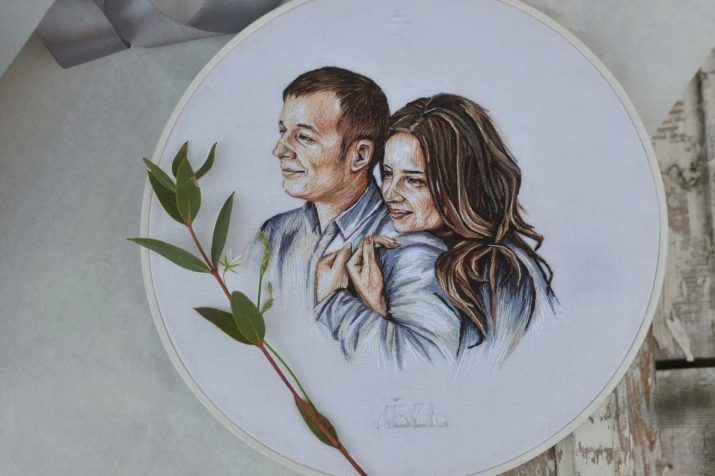
Silk, satin - used for traditional Chinese or Japanese embroidery. Working with these species requires certain skills and experience.
Modeled feltmade from a mixture of natural and artificial fibers. Any folds on it can be smoothed out by simply dampening it with water. It must be remembered that when making a large ornament, the felt is stretched.
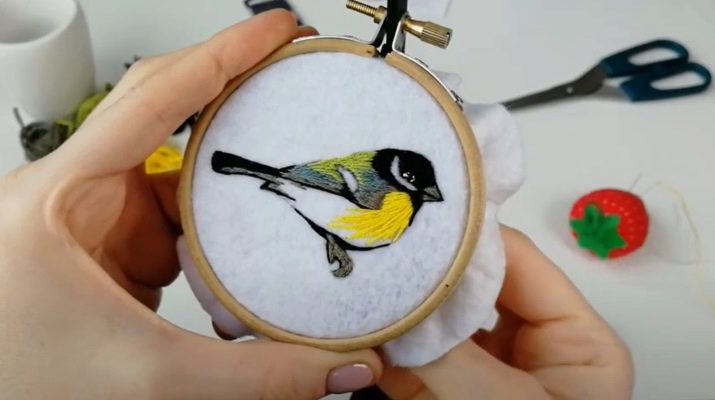
Wool and semi-wool - for these species, woolen threads are taken. The ornaments turn out to be somewhat fleecy, but small flaws are easy to hide. For woolen products, you can try a voluminous surface.
Tulle is an airy and dense translucent material allows you to create decorative paintings with the effect of weightlessness. They also decorate light blouses or dresses.
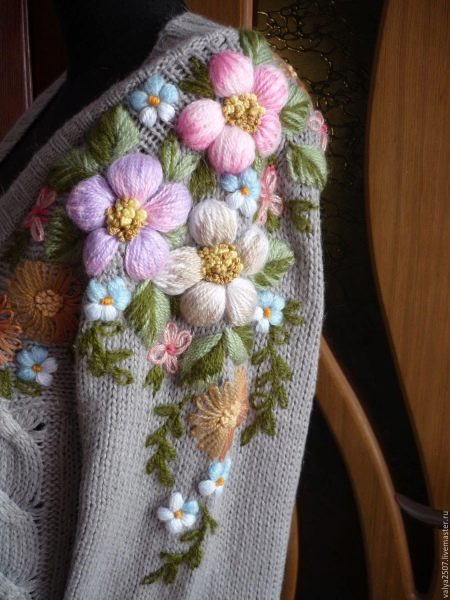
Leather - it is better to take thin skin 0.3-0.5 mm, Italian is suitable. They are used to decorate bags, bracelets, belts and clothing.
Mixed fabrics - these fabrics include any composition in different proportions, it can be cotton and rayon, viscose and linen, spandex and cotton, and so on. It is important to pay attention to how dense the fabric is, whether it stretches. If so, non-woven fabric is glued from the inside out.
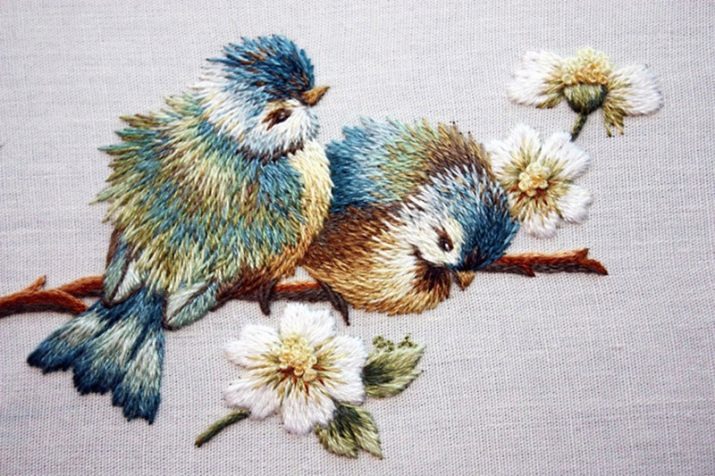
Non-woven - used as a lining for stretching varieties: knitwear, stretch fabrics. One side is smooth, and the other has an adhesive base. After ironing with a hot iron, they are glued to any surface. Not prone to shedding.
Canvas - taken for the counting surface, but only small, size 22. The result is smooth geometric patterns.

Water Soluble Canvas is a plastic base with holes, comes in different colors. Can be attached over non-woven fabric on a thin or stretch base. Suitable for combined and three-dimensional embroidery. It dissolves quickly when soaked in warm water.
Printed circuits - you can use not only the contours for the smooth surface, but also kits for cross stitching. Some craftswomen use a long stitch to sew on canvas or stramin. About 10 stitches cover an area of 40 crosses.

How to choose?
Novice needlewomen sometimes think that with a lack of experience, canvas is more suitable for embroidery. Often it is taken when sewing with a counted satin stitch. It is not so convenient to embroider with a flat satin stitch on the canvas: it is too porous, and it will be difficult to achieve an even outline.
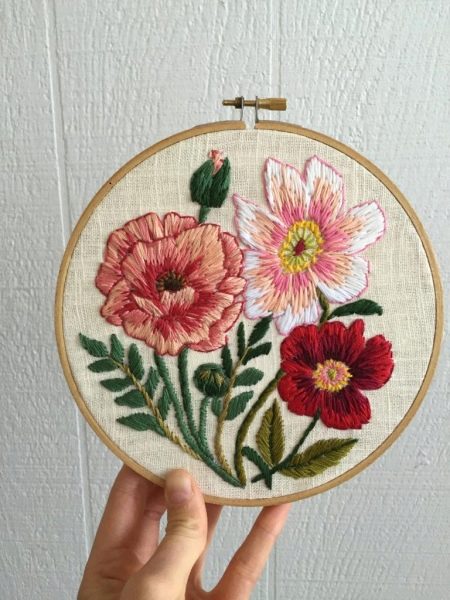
The fabric is best for:
-
with a smooth surface;
-
with a uniform weave of threads;
-
dense enough.
This does not mean that it is impossible to embroider a pattern on stretched and creased bases. The satin stitch is also suitable for knitwear, but non-woven fabric must be placed from the inside out.
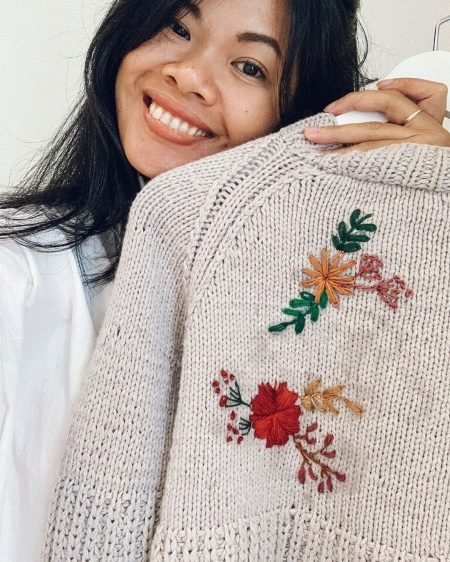
How to use?
To carry out the traditional technique, you do not need to purchase special sets, it is enough to find a suitable picture and transfer the drawing to matter. Of course, you can purchase patterns and blanks for needlework, but this technique is so versatile - you can embroider anything you want.
It is better for beginners to select simple pictures without intricate ornaments and complex shades, let it be one or two small objects in contrasting colors.
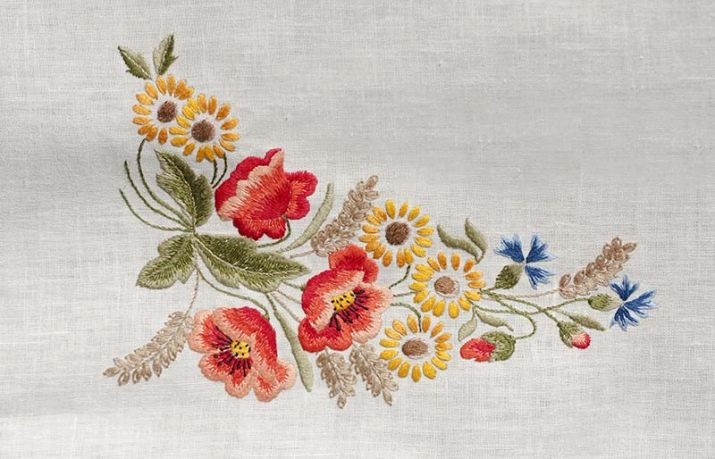
The easiest way to translate a pattern from paper:
-
the product is washed and slightly dried;
-
ironed thoroughly;
-
laid on a plane and fixed;
-
dark carbon paper is applied to the fabric;
-
a drawing is placed on top and fastened with tailor's pins, magnets;
-
the contours are outlined with a sharp, very hard pencil or non-writing pen.
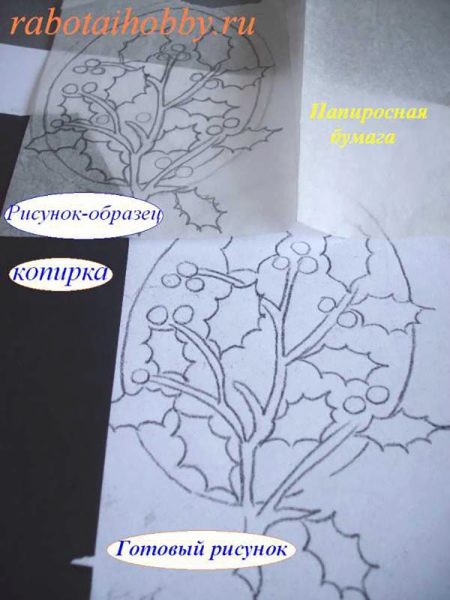
You can use a regular window for small formats: the flap and paper with a pattern are fixed on the glass with adhesive tape and outlined with a soft pencil. This is done during daylight hours.
Instead of a window, any transparent surface is suitable - a glass table, a curbstone. You can put a sheet of thick glass on the stand, a bright lamp is placed below - the ornament will be clearly visible.
